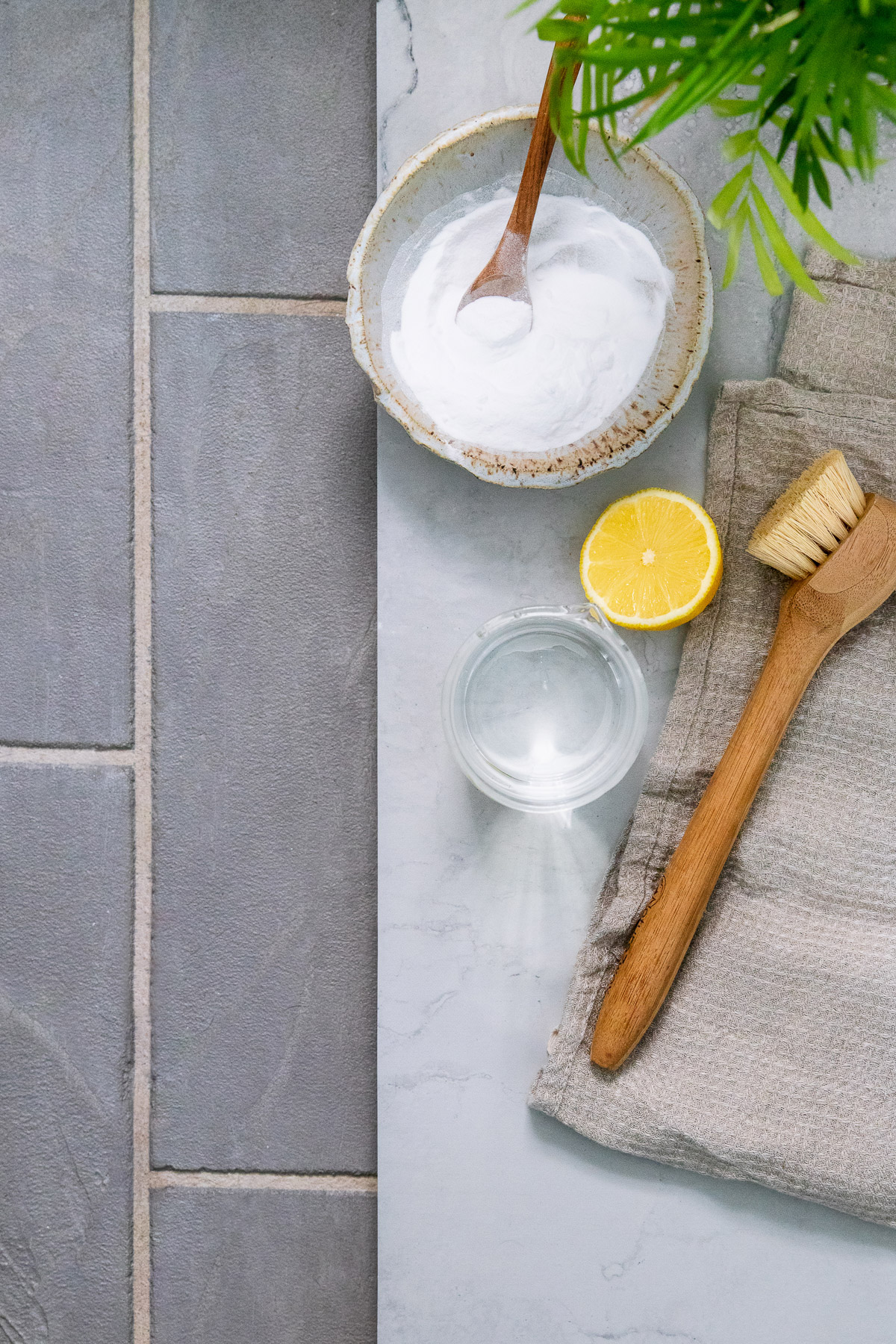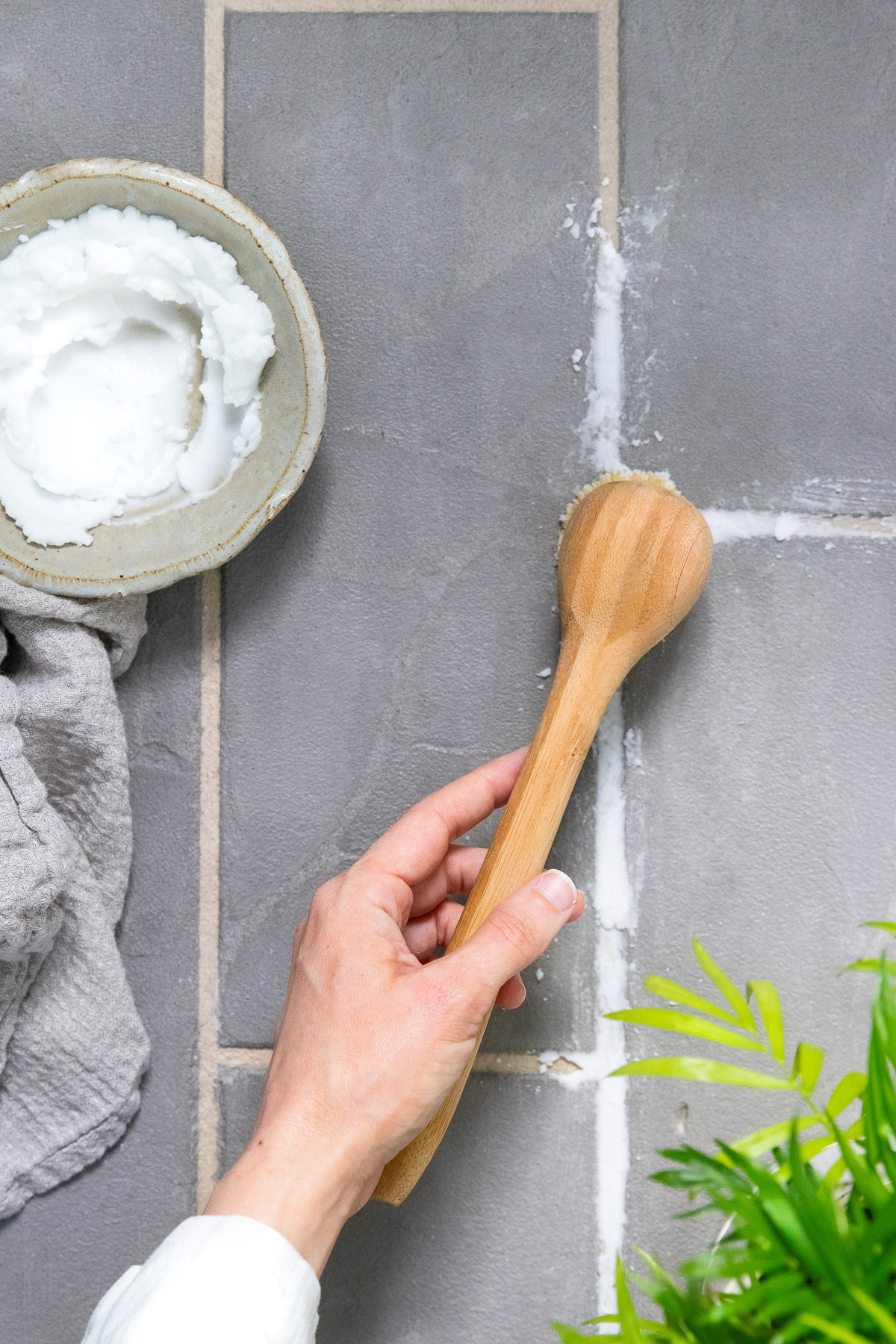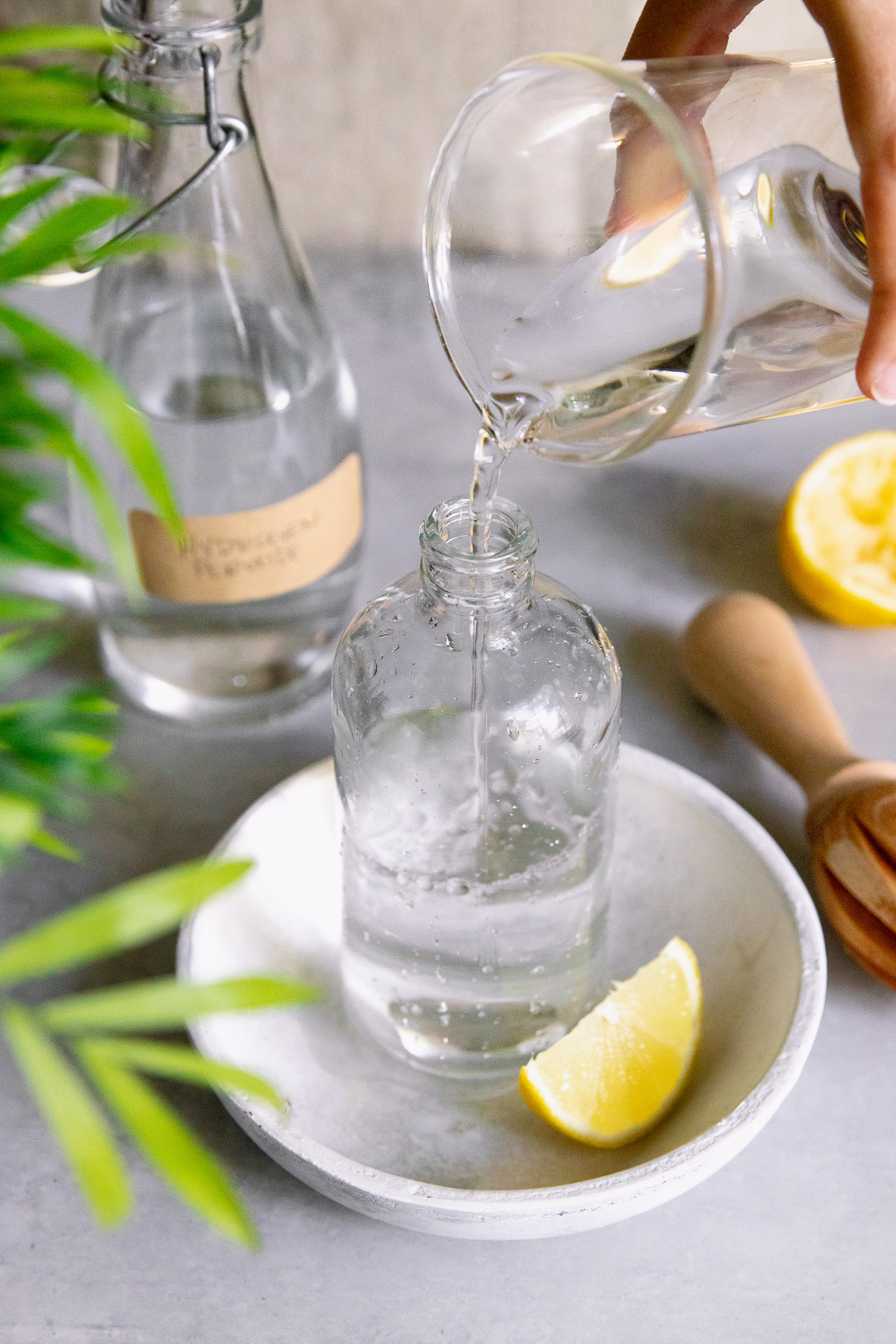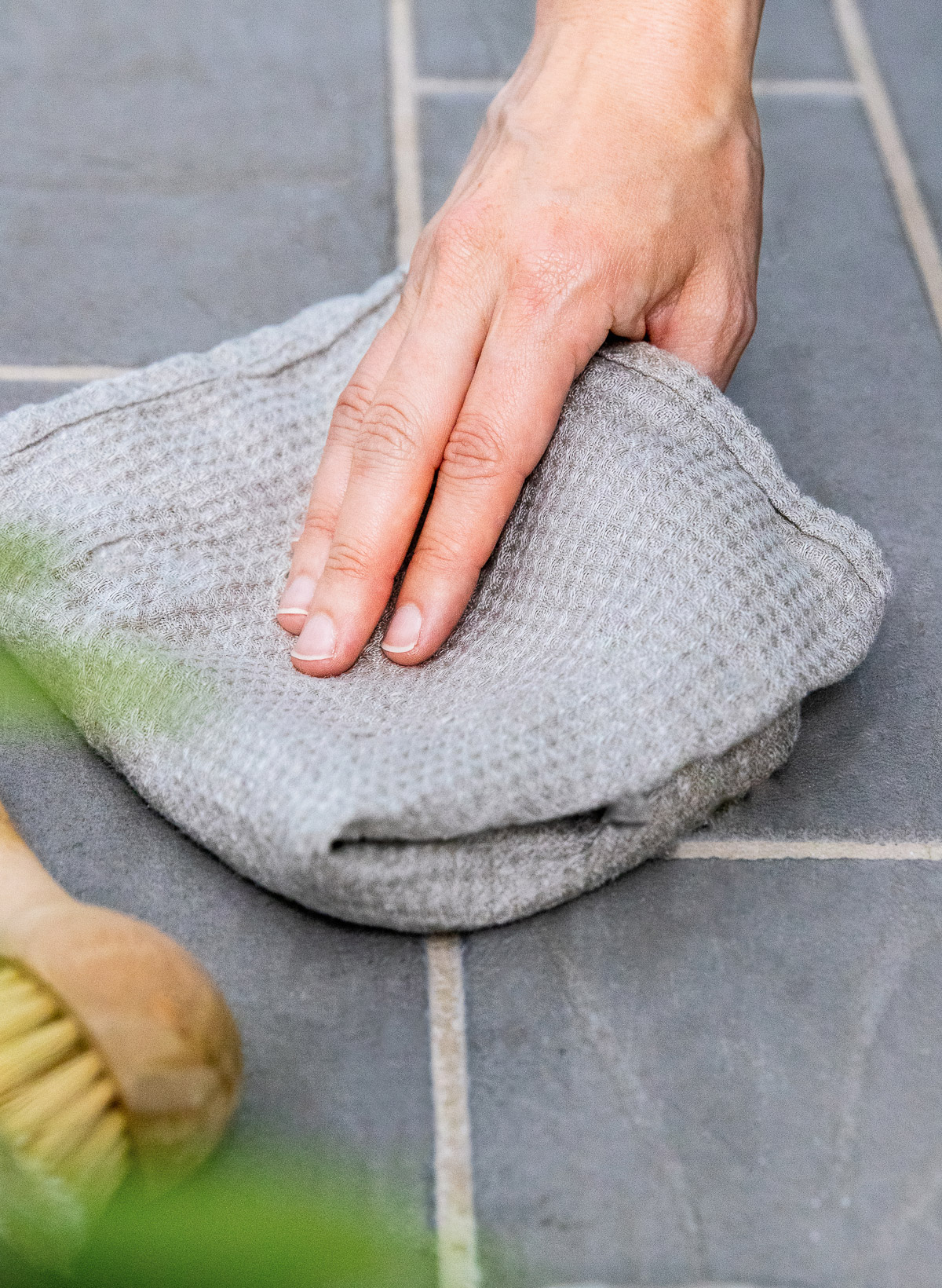If there’s a cheat code for keeping grout clean, I really wish someone would tell me what it is. Whether it’s in the shower or on the bathroom floor, grout attracts dirt and stains like a magnet. Over time it gets dingy and discolored, and the only option is to re-grout. Or is it?
I recently put the internet’s best grout cleaning tips to the test and walked away with cleaner, brighter grout (and only a small backache—a win, if you ask me!) If you’d rather skip the re-grouting process, here’s how to clean grout and keep it clean.
How to Clean Grout
Rather than rushing through these steps, I recommend taking your time and letting the cleaner work its magic every step of the way. The longer it sits, the more easily it can lift dirt and stains, leaving you with white, brighter grout.
1. Gather your supplies
Grout is a surprisingly delicate beast. While it may look like clay or stone, it’s actually a porous mixture of sand, cement and water, that’s prone to absorbing anything it comes in contact with. While you might be tempted to use things like bleach or vinegar to clean it, harsh ingredients may actually weaken or discolor your grout, leaving you with more stains than you started with.
To gently clean grout and remove tough stains, you’ll need:
—Baking soda
—Dish soap
—Hydrogen peroxide
—Lemon juice
—Water
—Small, firm scrub brush (or an old toothbrush)
—Towel
—Wet/dry vacuum or broom (if cleaning grout on floors)
2. Pre-clean
Before you get started on the grout, make sure to clean the tile ahead of time to get rid of dirt and grime that you may otherwise rub into the grout. When cleaning tile floors, I like to vacuum and then mop to make sure they’re really clean. If cleaning walls, removing surface grime with hot water and a towel will do the trick. Let the tile dry thoroughly.
3. Scrub the grout
A lightly abrasive cleaner made from baking soda and dish soap is perfect for getting rid of gross stains without weakening your grout.
Ingredients
—1 cup baking soda
—1 teaspoon dish soap
—Water
Mix together baking soda and dish soap in a small bowl. Then add just enough water to form a paste.
Spoon the mixture onto the grout and let sit for 10 minutes to penetrate the grout and loosen stains. Use a scrub brush to work the mixture into the grout.
Wipe up any excess baking soda and use a wet/dry vac or broom to get up the rest.
4. Lighten stubborn stains
Since grout is highly porous, it has a tendency to hang onto some stains longer that it should. For stubborn stains, you may need to use hydrogen peroxide and lemon juice as a gentle, sealant-safe alternative to bleach.
Ingredients
—1 cup hydrogen peroxide
—1/4 cup lemon juice
—1 cup water
Combine the ingredients in a spray bottle. Spritz on grout stains and let sit for 10 minutes. If needed, apply another coat. As it sits, it should help pull stains from grout and lessen any discoloration.
5. Wipe up any lingering puddles
Since sitting water only makes grout more absorbent, grab an old rag and drag it along any wet grout to soak up leftover puddles. This also helps maintain the grout’s sealant and ensures that it stays looking cleaner, longer.
Grout Cleaning Tips
Let your cleaner sit, but not too long. To get the best results, you want to give your grout cleaner plenty of time to work — but not so long that it weakens the finish and breaks down the grout’s sealant. I recommend applying both the baking soda mixture and hydrogen peroxide spray for 10 minutes, max.
Use a firm, narrow brush. Since the surface of grout has small spaces that easily trap dirt, you’ll need a firm brush to really get in there and help loosen the dirt so you can mop it up later. A cheap toothbrush works just fine, but I prefer a natural bristle dish brush.
Always mop or vacuum last. When you’re done scrubbing, you’ll probably take a look around and see a huge wet mess. If you have a wet/dry vac, now is a great time to get it out. Otherwise, you can mop up the baking soda mixture or use a broom and dust pan to sweep it up. If you still have a light coat of baking soda on the floor, let it dry before going over it with your regular vacuum.
Clean your grout regularly. While it might be annoying, the only way to keep permanent stains from affecting your grout is by deep cleaning every few months. In the shower, wipe walls with a squeegee everyday to prevent mold and grime stains from forming in the first place. And every 2-3 months, use a gentle scrub and spray combo to lighten stains in the process of forming.
Grout Cleaning FAQ
How do I get rid of mold on grout?
Mold loves the dark, damp conditions often found in bathrooms. To tackle mold stains, skip the chlorine bleach since it can discolor grout and use a mold-removing product, like Oxiclean or RMR-86 Mold Remover.
How can I change the color of my grout?
If your grout is irreparably discolored and traditional cleaners aren’t doing the trick, you can freshen it with a grout pen to both tint and re-seal old grout.
Will homemade cleaners damage grout?
Always avoid using harsh, acidic cleaners, like white vinegar when cleaning grout. Vinegar can wear down the grout and remove the sealant, making it more likely to stain in the future.
3



Leave a Reply